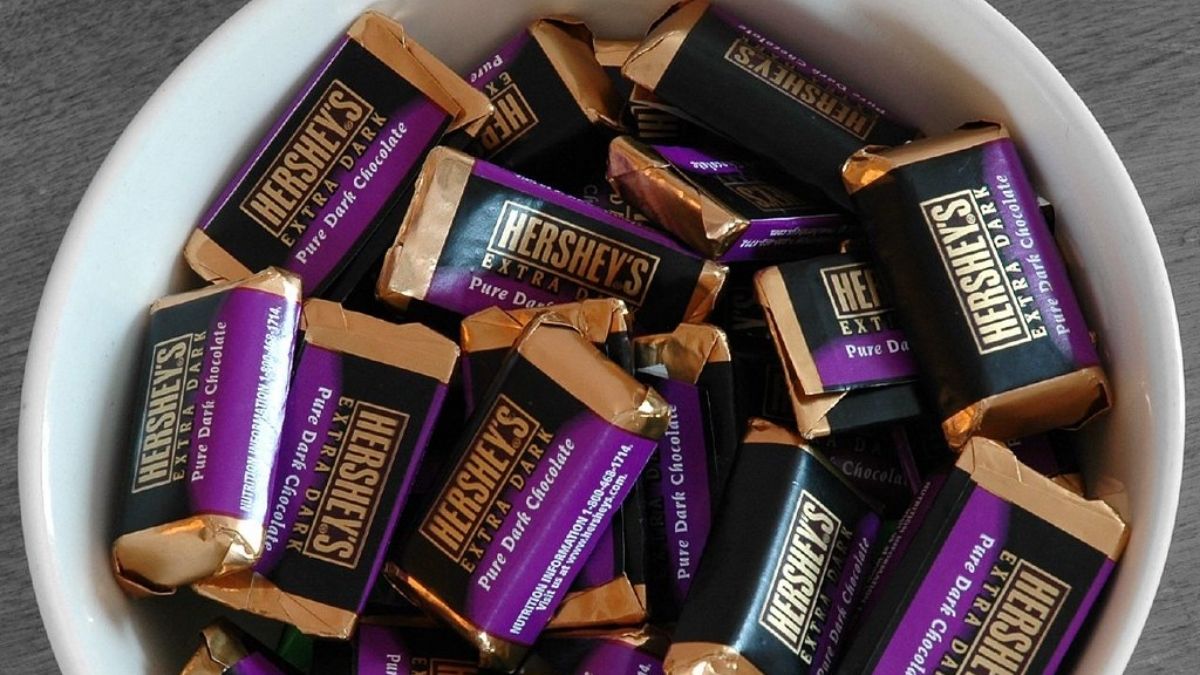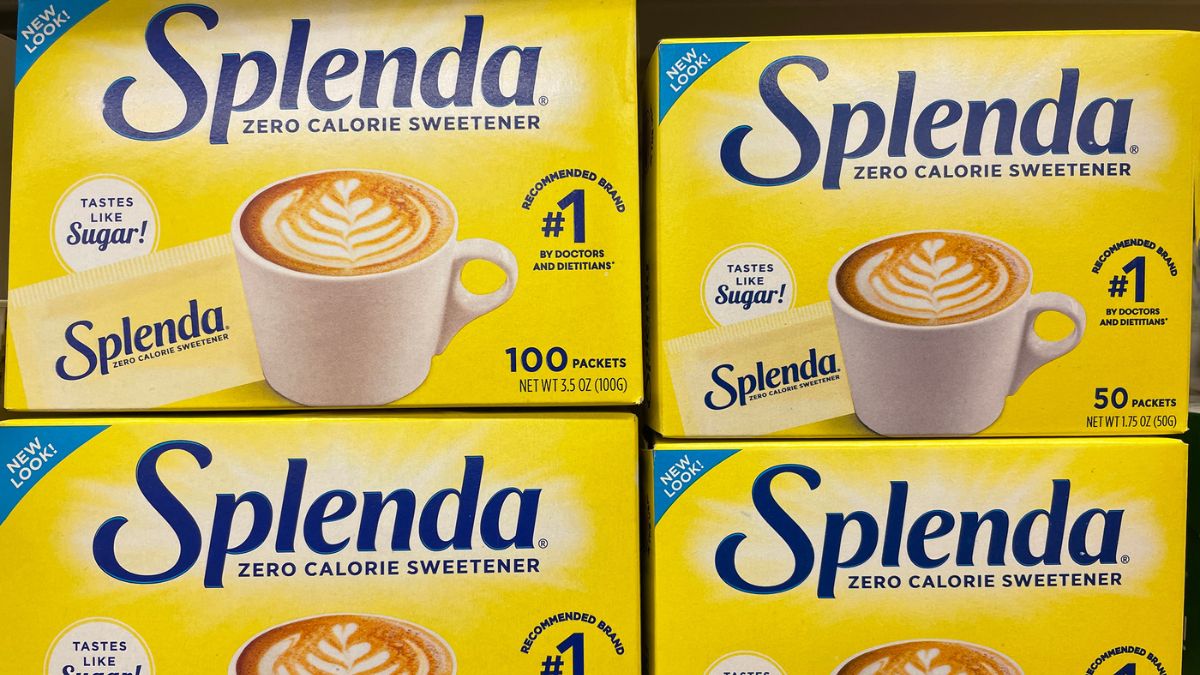Answer: No.

Hershey’s Chocolate Company is most notable for its iconic milk chocolate bars that have taken the world by storm since the early 1900s, and since you already heard milk, then we’re done here. I’m just kidding! Well, today we’d be rattling on about a specific “sweets” that Hershey’s is quite controversial about.
Hershey’s Special Dark Chocolate is quite popular among people who are into less sugary chocolates, but I dare say vegans are barely enthralled with the candy. This is because the product is not vegan-friendly, unlike most of its kind, and since Hershey’s is too well-known for its milk chocolate vibe, they decided to apply that as well to their Special Dark Chocolate which also has 20 g added sugars.
That shouldn’t be surprising at all, but what may be surprising is that the milk chocolate company has finally launched a vegan milk chocolate variant that we’ll get to later on. For now, let’s take a look at the simple ingredients of Hershey’s Special Dark Chocolate and what makes it non-vegan, in-depth. Don’t be dismayed though, as there’s a handsome load more of vegan-friendly dark chocolate brands out there.
Table of Contents
Simple Ingredients
At first glance, most of the listed ingredients on Hershey’s Special Dark Chocolate are obviously non-vegan and seem redundant, I tell you though that they’re quite different in a few aspects and serve different purposes, making each of them vital to the originality of Hershey’s Dark Chocolate bar. Let’s begin with the vegan-friendly ingredients, then the notorious couples.
Sugar
There’s no real deal when it comes to sugar since both natural and added sugars are included in this listing, but are separate in the nutrition table. You may have heard countless times already how bone char is sometimes used in table sugar (brown, white, confectioner) to achieve its color and fineness, especially with common cane sugar. Organic sugars like beets, coconut, and organic cane however aren’t (usually) processed with bone char.
Nonetheless, it remains a mystery which type of sugar and what kind of processing were used in specific products, and the only way to get a hint of those is to contact the manufacturers directly. Also, according to PETA, though it is advisable to choose an organic, bone-char-free sugar or sweetener, that choice is virtually impossible with common and world-renowned products like candies and chocolate which are automatically manufactured.
PETA and other animal-friendly organizations out there are doing their best to encourage people for more humane foods, and simply doing your part to reject the cruelty-rich dishes around you is great enough. However, being too squeamish of the most trivial things like sugar in candy isn’t going to help the cause at all. It’s only going to make people more frightened and displeased with the vegan lifestyle, which would ultimately be more harmful to our world.
Chocolate
What’s this? Chocolate as an ingredient in chocolate? Duh?
Yes, the reason why chocolate is listed as an ingredient is because of two reasons: one, it’s chocolate liquor which contains cocoa butter and cocoa solids, and two, it’s a separated listing from cocoa butter meaning that cocoa butter has been added to the blend.
One good trivia I have for you is that chocolate and cacao are not exactly the same. Chocolate contains cocoa butter and cocoa solids, so it comes from the same cacao beans, but it’s unrefined and non-isolated. Cacao is refined and isolated from its cocoa butter, therefore it has fewer fats and sugar compared to raw chocolate. Cacao and cocoa beans can be used interchangeably though.
Since chocolate comes from the ground beans of the cacao plant, it’s naturally vegan.
Cocoa Butter
Cocoa butter is listed apart from chocolate signifying that it’s an added ingredient. Cocoa butter isolated from cacao is reused to make chocolate creamier and more flavorful. Finally, cocoa butter is a vegetable fat which makes it completely vegan as it’s also sourced from the cacao bean.
It’s more commonly used in making white chocolate as it gives the smooth texture and creaminess of the product, but it’s also a popular ingredient in skincare products due to its longevity and natural health benefits. According to Web MD, the intake of cocoa butter is quite beneficial for cholesterol management, liver disease prevention, and bone health. while when it’s applied as a skincare product, it’s a good source of Vitamin E that helps heal, replenish, and protect the skin.
It’s definitely a good idea to use pure cocoa butter sometimes in cooking vegan sweets as it gives off a seductive aroma and taste of fresh cacao. Here’s a bonus recipe for cocoa butter that you could try.
Cocoa Processed With Alkali
When cocoa nibs are soaked in a food-grade alkali solution, their pH level is raised to produce stronger flavors and darker colors. This is called cocoa alkalization, and this process helps reduce the natural acidity of cocoa, prevent the sour flavors, and increase the solubility and spread of cocoa in water. Since the cocoa nibs settle with a higher pH level during the process, the bland or bitter taste of common dark chocolate is produced due to basicity.
Lecithin
Soy lecithin, or simply lecithin, acts as an emulsifier that binds together the cocoa solids, sugars, and milk to the cocoa butter, giving chocolate its natural viscosity and thickness. Lecithin has about 10x the softening ability of cocoa butter, but since the ingredient is more affordable, it’s sometimes considered a cheat. However, lecithin serves a better purpose than simply mimicking what cocoa butter can do, especially as an emulsifier. When used together, they create the near-perfect smoothness of chocolate and also its soft viscosity when melted. That aspect however can be replaced with plant-based ingredients.
Soy lecithin is vegan but contains soy allergens, so better watch for it.
Milk
Alas, here we are with the bad eggs, I mean milk in this context.
There shouldn’t be a lot to say about milk since it’s as clear as day that it’s not vegan-friendly. Vegans avoid milk because it’s a product that is taken from cows, and it doesn’t matter whether the process is cruel or not, but since cow milk rightfully belongs to cow calves, we as human beings shouldn’t neglect that.
Most milk farms introduce steroids and other medications to force cows to produce milk, and apparently since people keep stealing the fresh milk from the mothers, there’s almost non-left for their offspring.
In Hershey’s, it’s their trademark chocolate. Milk introduces the mellow flavor and texture in chocolates that also counters the natural bitterness of chocolate liquor. Tannins are acidic compounds present in chocolate liquor (around 6%) and are responsible for the edgy taste of raw chocolate. These compounds also like to bond with proteins that mitigate their bitterness, and it so happens that milk is rich in these proteins that its creamy flavor overtakes the astringency of tannins. However, soy lecithin combined with other plant-based milk can do the same.
Milkfat
Milkfat is ideally used as an extra softener in chocolate, and when combined with cocoa butter, the compound becomes a eutectic mixture that is easier to heat, melt, and process, and also has a longer shelf life. Though milkfat may seem very important as a partner to cocoa butter, it’s unnecessary since dark chocolate does fine even without milk products, especially for us, vegans (we should say better).
Without milkfat, dark chocolate would have to cook longer and live shorter, but those aren’t pressing problems anyway since most organic products are like that too.
Vegan Treat From Hershey’s
Hershey’s first-ever plant-based chocolate bar was released very recently around September 2021, and it’s caused quite the excitement for vegans waiting for a Hersheys vegan-friendly treat. Hershey’s Oat Milk Made Plant-Based Confection comes in two variants, Classic Dark and Extra Creamy Almond & Sea Salt. However, the production is limited so they’re pretty rare, but according to VegNews, the candies will be available in select Target locations and also on their website.
A Hersheys Oat Milk chocolate bar contains sugar, cocoa butter, chocolate, oat flour, rice flour, soy lecithin, sunflower oil, almonds, and sea salt. The reason why there’s a long list of ingredients for this vegan dessert is that much is needed in order to replace the milk and ensure that the result is still as creamy, flavorful, and delightful as the original blend.
Vegan Dark Chocolate Alternatives
Finally, Hershey’s Oat Milk Dark Chocolate bar is only one among a myriad of dark chocolate bars that are vegan-friendly, and usually, 70-85% cocoa dark chocolate is naturally vegan, but anyway, here’s a quick list of the best vegan-friendly dark chocolates that could be readily available to you.
- Purdys Vegan Dark Chocolate
- Green & Black’s Organic Dark Chocolate 85% Cacao
- Enjoy Life Dark Chocolate Bar
- Enjoy Life Ricemilk Chocolate
- Chocolove Orange Peel in Dark Chocolate 55% Cocoa
- Endangered Species Strong & Velvety Dark Chocolate Bar 88% Cocoa with hints of fruit and spice
Chocolate Brands With More Vegan Products
Wrap It Up
So here we are at the end of this article and I’m glad we’re closing on a good note! Even though Hershey’s Special Dark Chocolate isn’t vegan due to its added milk contents, Hershey’s Oat Milk Classic Dark Chocolate is and it’s definitely something you have to try, it’s Hershey’s after all. The sad part about their vegan-friendly chocolates is that they’re pretty rare for now, but that’s because the candies are part of Hershey’s ongoing marketing test which is why the production is very limited. However, it’s been said that the tests will run till June 2022 and production is slowly increasing.
Hershey’s is currently expanding their projects to create better products that would be suitable for all types of people with different diets and lifestyles. Since the company does claim to be the leading confectionery company in the US, it desires to reach as many people as it possibly can to stay steady in that position. So you can definitely put your hopes up that Hershey’s will come up with more plant-based products somewhere in the future.
Well anyway, while you’re waiting for all that, you can grab your own bunch of vegan dark chocolates from other popular brands and they’re definitely not inferior to the world-renowned brand. So, that’s it for this article, and thanks for reading!




